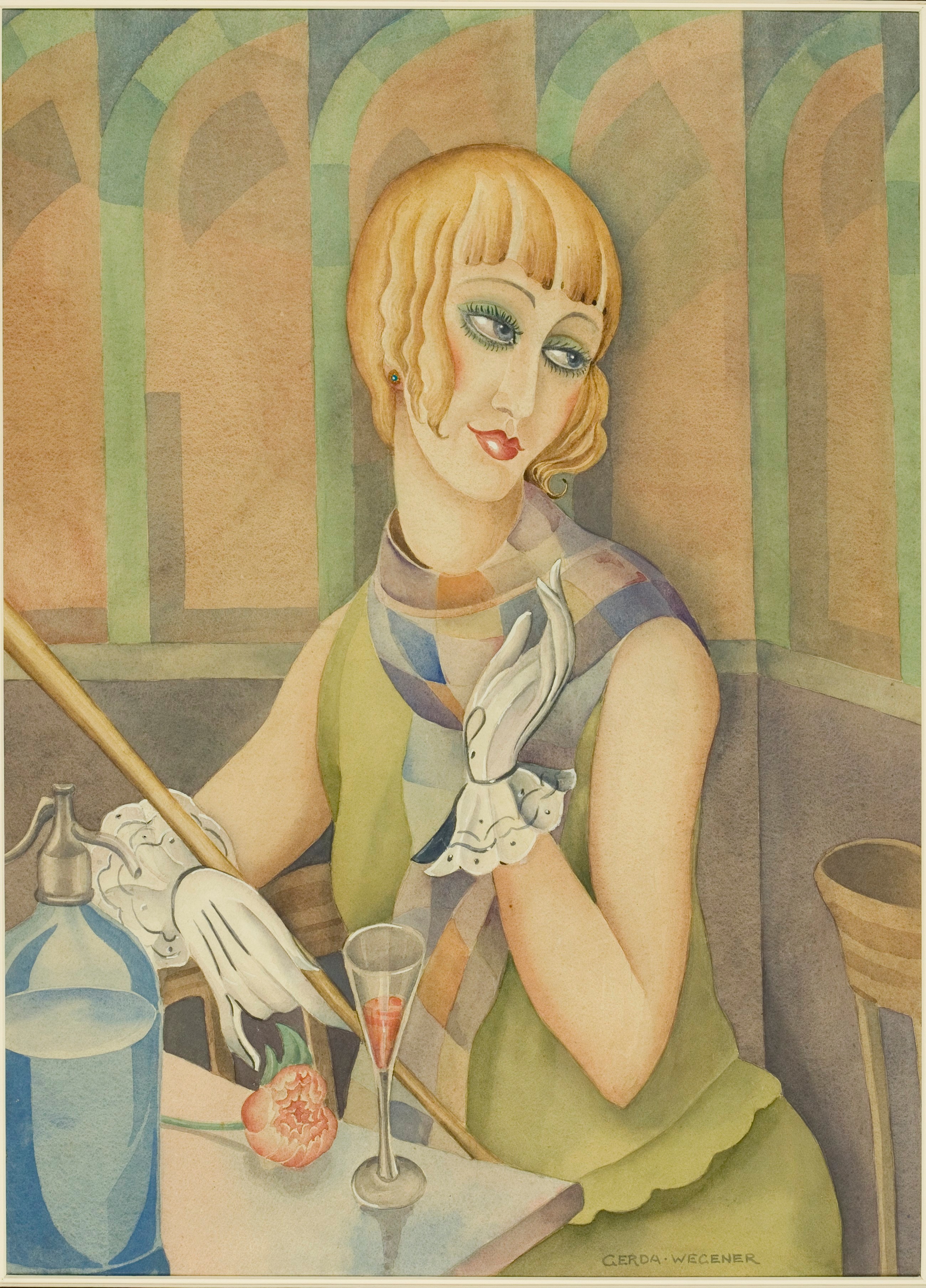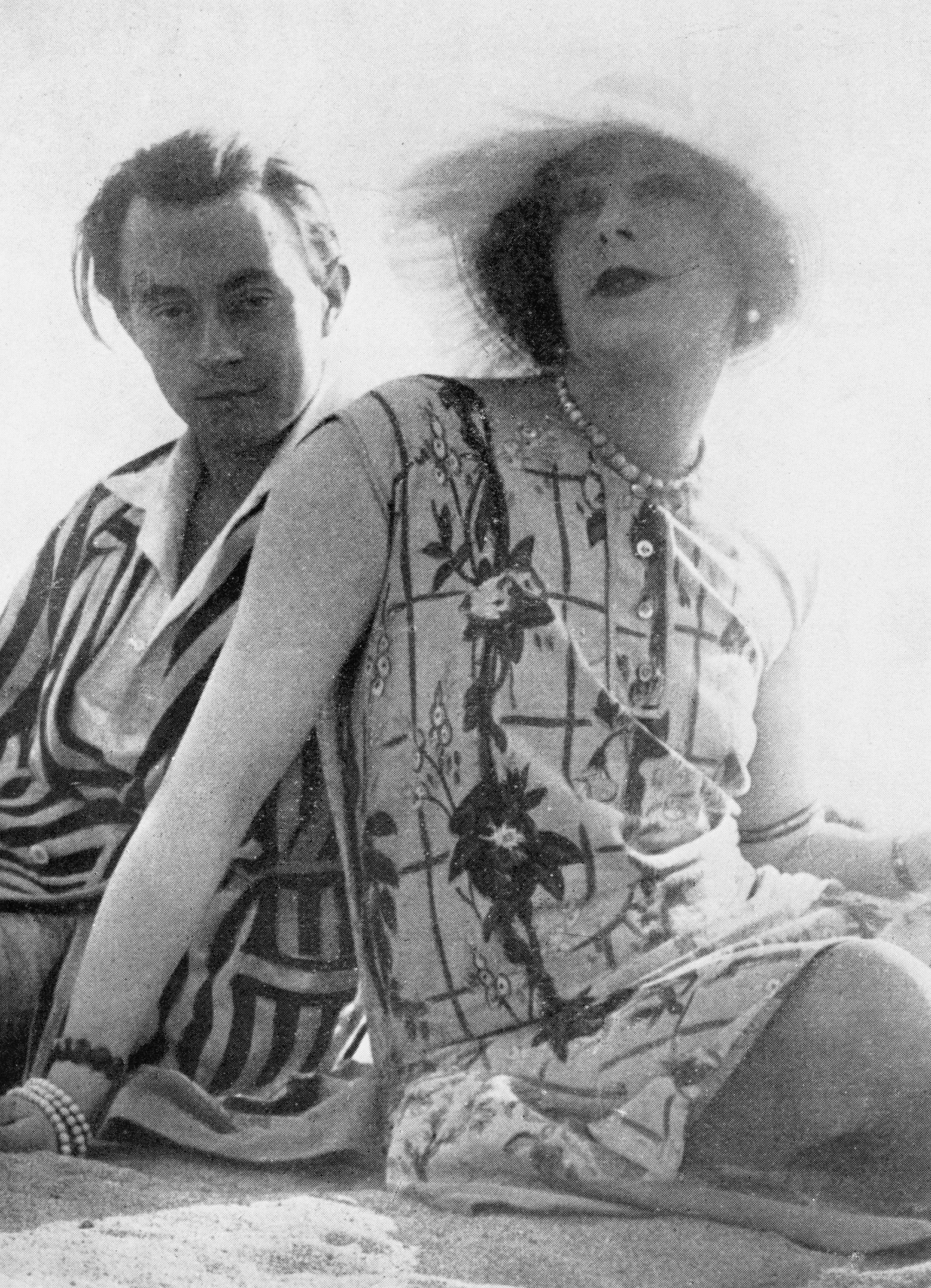Gerda Wegener (1886–1940) was a Danish Art Nouveau and Art Deco illustrator and painter. She went to Copenhagen to study at the Royal Danish Academy of Art. There she met the artist Einar Wegener, later known as Lili Elbe. They got married in 1904, and they moved to Paris in 1912. There, Gerda loved fashion and worked as a painter and illustrator for magazines such as Vogue and La Vie Parisienne. While successful in Paris, Gerda was not very popular in Denmark, where her work was considered too controversial.
Einar, who was initially considered the larger of the two artists, put his own work on hold to support his wife in her endeavors. Einar posed for Gerda Wegener in women's clothes, went on to be called Lili Elbe, and became Gerda's preferred model. Initially, Gerda Wegener introduced strangers to Lili as her husband's sister. In 1930 Lili underwent a gender reassignment surgery, which was one of the first of its kind to attract immense attention. Gerda Wegener supported her partner to the best of her ability during the transition period. In 1930 her marriage was canceled by the King of Denmark.
The life of Lili Elbe and Gerda Wegener formed the basis for David Ebershoff's bestseller The Danish Girl, later adapted as a film by Tom Hooper under the same title. Today's work is in the collection of Wellcome Collection but we present it thanks to Europeana; for more queer stories, narratives, and cultural heritage from all around Europe, visit their website. : )
P.S. Here you can get to know more about the fascinating life of Gerda Wegener and her art.


 Gerda Wegener
Gerda Wegener